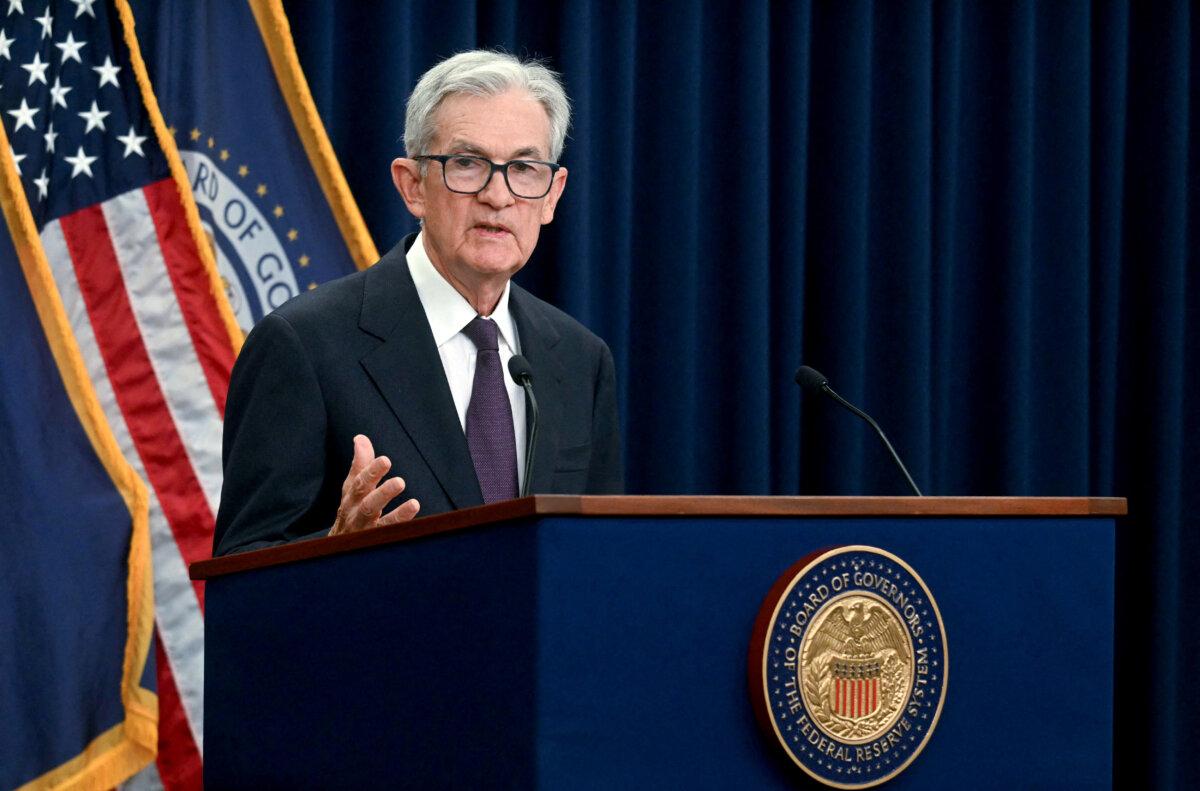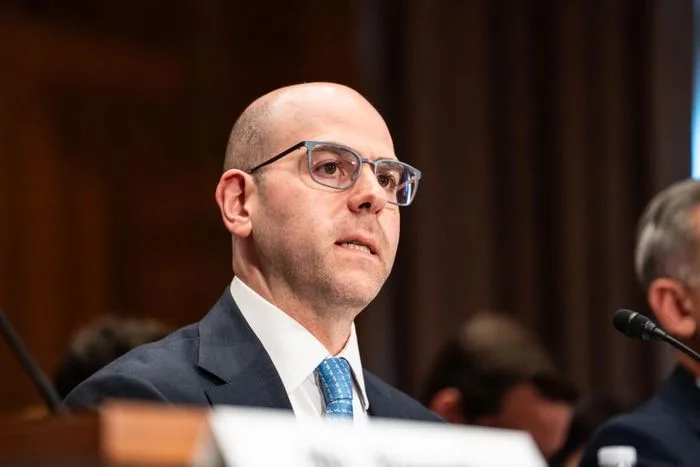By Andrew Moran
Federal Reserve Governor Stephen Miran said the U.S. central bank should be more aggressive in cutting interest rates.
Last week, the Fed lowered a key policy rate by a quarter point for the first time this year to a new target range of 4 to 4.25 percent. While investors anticipated substantial rate-cutting over the next 15 months, monetary policymakers signaled a more conservative outlook.
Officials believe the federal funds rate—which influences borrowing costs for businesses and consumers—will settle at around 3 percent by the end of 2027.
But Miran said it should be “almost 2 percentage points lower,” or around 2.5 percent.
Appearing at the Economic Club of New York on Sept. 22, the new member of the Fed Board of Governors said the current administration policies are creating a different economic climate, pointing to deregulation, tariff income, and changes to immigration and tax policy. Keeping interest rates elevated for longer, he says, threatens the maximum employment side of the Fed’s dual mandate.
“Leaving policy restrictive by such a large degree brings significant risks for the Fed’s employment mandate,” Miran said in his first public speech since joining the institution. “Leaving short-term interest rates roughly 2 percentage points too tight risks unnecessary layoffs and higher unemployment.”
Miran was the lone dissent at the September Federal Open Market Committee meeting, preferring an interest rate cut of 50 basis points.
Recent employment data suggest the U.S. labor market could be slowing.
Last month, the Bureau of Labor Statistics reported that the economy added 22,000 new jobs, which was smaller than expected. Additionally, the bureau’s annual preliminary benchmark revisions revealed 911,000 fewer jobs than initially reported.
Fed Chair Jerome Powell acknowledged that risks to the institution’s employment mandate have grown, describing the labor market as being in a “curious balance.”
“Typically, when we say things are in balance, that sounds good, but in this case, the balance is because both supply and demand have come down quite sharply,” Powell told reporters at last week’s post-meeting press conference. “Now, demand is coming down a little more sharply because we now see the unemployment rate edging up.”
Despite Powell stating that the Fed is transitioning to neutral policy—interest rates are neither expansionary nor contractionary—Miran said the federal funds rate “is well into restrictive territory.”
While he accepted that there is no perfect gauge to determine appropriate monetary policy, Miran referenced the Taylor rule multiple times throughout his speech.
Named after economist John Taylor in 1993, the Taylor rule helps policymakers estimate the short-term rate that should be targeted by considering the economic output gap and inflation relative to the Fed’s target rate of 2 percent.
“Including the inflation and output channels along with the median model-implied r-star, the fed funds rate should be around 2 to 2.25 percent under the standard Taylor rule approach,” Miran said. The r-star is the neutral federal funds rate.

But many of his colleagues argue that the Federal Reserve should take the stairs down to lower interest rates, not the elevator.
What Fed Officials Are Saying
Several Federal Reserve officials, including St. Louis Fed President Alberto Musalem and Cleveland Fed President Beth Hammack, signaled concern about cutting interest rates any further.
Musalem, speaking at the Brookings Institution on Sept. 22, defended his support for last week’s 25-basis-point rate cut. However, he stated that he is reluctant to go any further.
“The stance of monetary policy now lies between modestly restrictive and neutral, which I view as appropriate,” Musalem said in prepared remarks. “However, I believe there is limited room for easing further without policy becoming overly accommodative, and we should tread cautiously.”
He said that while the risks are tilting more toward employment than inflation, emphasizing “one goal at the expense of the other can lead to undesirable outcomes.”
Hammack shared Musalem’s consternation, saying that the central bank must be “very cautious” in shifting too far away from a restrictive stance.
“I think we are only a short distance to neutral, and it worries me that if we remove that restriction from the economy, things can start overheating again,” Hammack said at a Sept. 22 event hosted by the regional central bank.
The Summary of Economic Projections—a periodic survey of officials’ expectations for monetary policy and the economy—reveals officials forecasting two more quarter-point rate cuts this year, and one more reduction in 2026.
Investors have followed suit, penciling in a 90 percent chance of a 25-basis-point rate cut at next month’s meeting, according to the CME FedWatch Tool.
The next two-day Federal Open Market Committee meeting will take place on Oct. 28 and 29.





